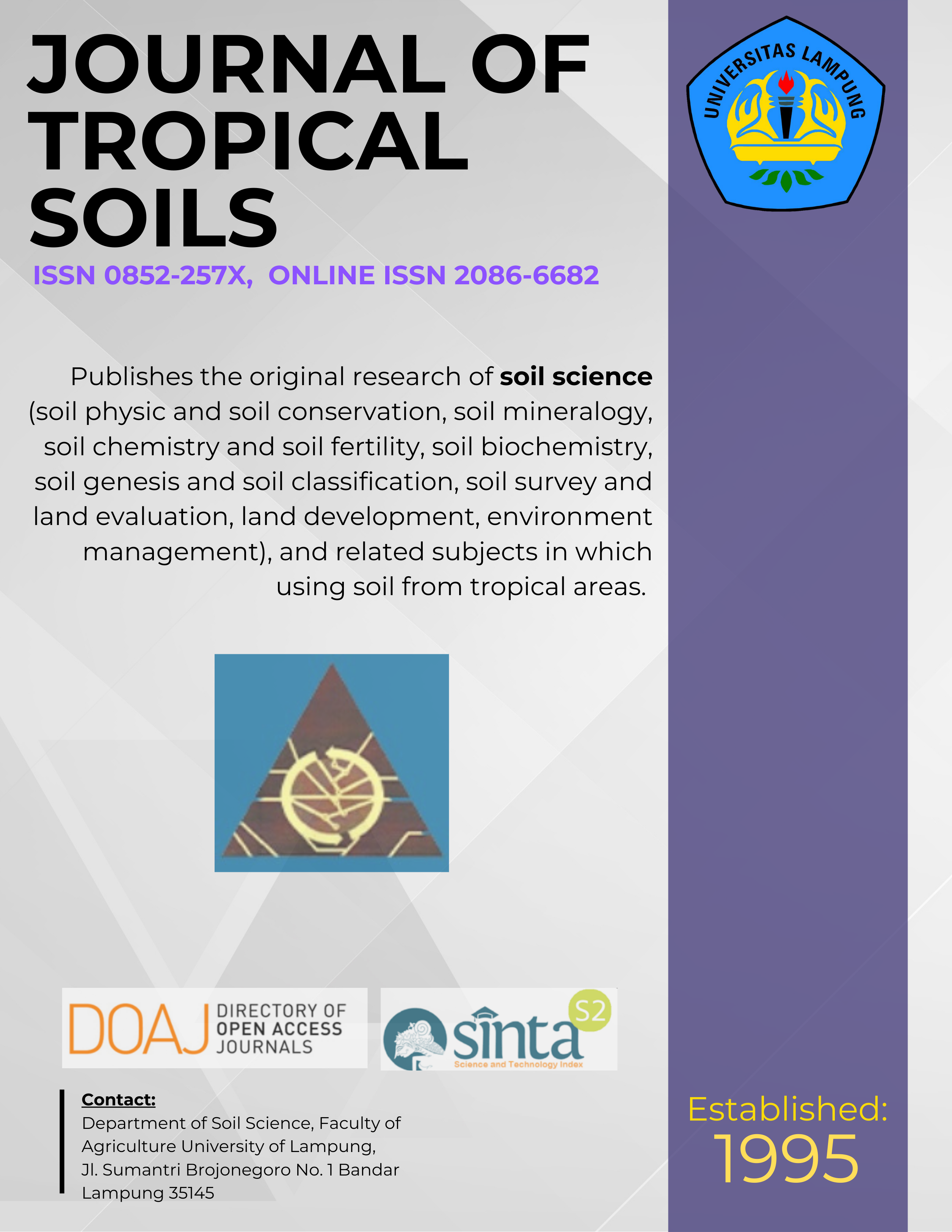The Role of Peat Layers on Iron Dynamics in Peatlands
Main Article Content
Abstract
The Role of Peat Layers on Iron Dynamics in Peatlands (A Fahmi, B Radjagukguk, BH Purwanto and E Hanudin): The research aimed to study the effect of peat thickness and humification stage of the peat material on Fe solubility at the peatlands with sulfidic material as substratum. The research was conducted at three conditionals of ombrogen peatlands ie ; deep, moderate and shallow peat. Soil samples were collected by using peat borer according to interlayer (the border layer of peat and mineral layer) and conditional of soil horizons. The sample point depth were (cm) G.s2 : 25, G.s1 : 50, Int.s : 70, M.s1 : 90 and M.s2 : 100 for shallow peat, G.m2 : 47, G.m1 : 100, Int.m : 120 and M.m1 : 135 for moderate peat and G.d3 : 50, G.d2 : 150, G.d1 : 200, Int.d : 220 and M.d1 : 235 for deep peat respectively. The results showed that most of Fe on the tested soils was found in organic forms. The peat layers above the sulfidic material decreased the Fe2+ solubility at peatlands. Fe2+ concentration in peat layer decreased with its increasing distance from sulfidic material. There was any other processes beside complexation and chelation of Fe2+ by humic material and its processes was reduction of Fe3+ and this conditions was reflected in redox potential values (Eh).
Downloads
Download data is not yet available.
Article Details
Section
Articles
License for Authors
Authors who publish with this journal agree to the following terms:
- Authors retain copyright and grant the journal right of first publication with the work simultaneously licensed under a Creative Commons Attribution License that allows others to share the work with an acknowledgement of the work's authorship and initial publication in this journal.
- Authors are able to enter into separate, additional contractual arrangements for the non-exclusive distribution of the journal's published version of the work (e.g., post it to an institutional repository or publish it in a book), with an acknowledgement of its initial publication in this journal.
- Authors are permitted and encouraged to post their work online (e.g., in institutional repositories or on their website) prior to and during the submission process, as it can lead to productive exchanges, as well as earlier and greater citation of published work (See The Effect of Open Access).
License for Regular Users
Other regular users who want to cite, distribute, remix, tweak, and build upon author’s works, even for commercial purposes, should acknowledge the work’s authorship and initial publication in this journal, licensed under a Creative Commons Attribution License.
How to Cite
The Role of Peat Layers on Iron Dynamics in Peatlands. (2018). JOURNAL OF TROPICAL SOILS, 15(3), 195-201. https://doi.org/10.5400/jts.2010.v15i3.195-201

